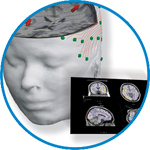- Home
- About ANT
-
Products

asa
asa is a highly flexible EEG/ERP and MEG analysis package with a variety of source reconstruction, signal analysis and MRI processing features.
.jpg)
eego mylab
The new frontier in multimodal brain research. With up to 16 kHz sampling rate, 256 EEG channels and unique software features, eego mylab gives you an unprecedented in-depth understanding of the human brain.

eego sports
eego sports offers complete freedom to collect high-density EEG data, bipolar EMG signals, and a variety of physiological sensor data, wherever and whenever required, with publish quality data in less than 15 minutes!

waveguard net
The waveguard net sets a new standard for research applications requiring high-density EEG data acquisition with quick preparation time, high flexibility, and subject comfort.

visor2
Our new and upgraded visor2 solutions integrate all the latest technologies for navigated rTMS, dual-coil navigation support, EEG-TMS recordings and pre-surgical evaluation for the highest quality in research and clinical procedures.

powerMAG ANT
The PowerMAG ANT 100 rTMS stimulator is designed for the specific needs of high-end TMS applications. Powerful high-frequency TMS as well as high precise single pulse and repetitive pulse protocols are combined in one single device.

xensor
xensor offers the solution for digitization of 3D electrode positions. xensor takes care of the whole procedure; it records, visualizes and stores positions acquired with a dedicated digitizer.

waveguard original
waveguard original is the cap solution for EEG measurements compatible with fMRI, MEG and TMS system. Use of active shielding guarantees performance in even the most demanding environments.

waveguard connect
waveguard connect EEG caps are a perfect match for hospitals and institutes aiming at reliable EEG, maximum uptime and great patient comfort! For optimal signal quality, the electrodes are made of pure, solid tin.

waveguard touch
waveguard touch is a dry electrode EEG cap. The unique Ag/AgCl coated soft polymer electrodes provide stable, research-grade EEG signals while maintaining subject comfort. The combination of these innovative dry electrodes and the industry-leading waveguard cap makes waveguard touch the best solution for dry EEG.

smartmove
smartmove allows planning of a complete TMS session ahead by defining stimulation sites based on anatomical MRI information and functional information like fMRI, PET or EEG/MEG.
Stay - References
- Support
- Events
- News
- Contact Us
You are here
Evidence for beta corticomuscular coherence during human standing balance: effects of stance width, vision, and support surface
Evidence for beta corticomuscular coherence during human standing balance: effects of stance width, vision, and support surface
The role of cerebral cortex for maintaining human standing balance remains unclear. Beta corticomuscular coherence (CMC) provides a measure of communication between sensory-motor cortex and muscle, but past literature has not demonstrated significant beta CMC during human stance. This study evaluated the effects of stance width, vision, and surface compliance on beta CMC during human stance using methods to enhance sensitivity to CMC. Ten healthy, young adults stood for three 60-s trials in each of a wide or narrow stance width while on a firm surface and in narrow stance on a foam surface, each with eyes open or closed. Beta CMC was calculated between contralateral electroencephalographic and electromyographic recordings. Electromyography was recorded from bilateral tibialis anterior and gastrocnemius lateralis muscles. CMC magnitude was defined as the average integrated area of coherence spectrum above a significance threshold. Measures of center-of-pressure (COP) sway were derived from force plates under the subjects’ feet. Results of CMC from 4 muscles across 6 stance conditions (a total of 24 combinations) demonstrated significant average CMC magnitude from every subject in 20 combinations and significant average CMC magnitude in 9 of 10 subjects in the remaining 4 combinations. The CMC magnitude was significantly larger in the wide-stance condition than in the narrow-stance condition with eyes open. No significant differences were detected when comparing eyes-open to eyes-closed conditions or when comparing firm- to foam-surface conditions. Correlations between CMC magnitude and COP sway elicited some significant relationships, but there was no consistent direction or pattern of correlation based on muscle or stance condition. The results demonstrate that significant beta CMC is evident during human standing balance, and that beta CMC is responsive to changes in mechanical, but not visual or surface, conditions.
For more information, click here >>

 Read more
Read more.jpg)




